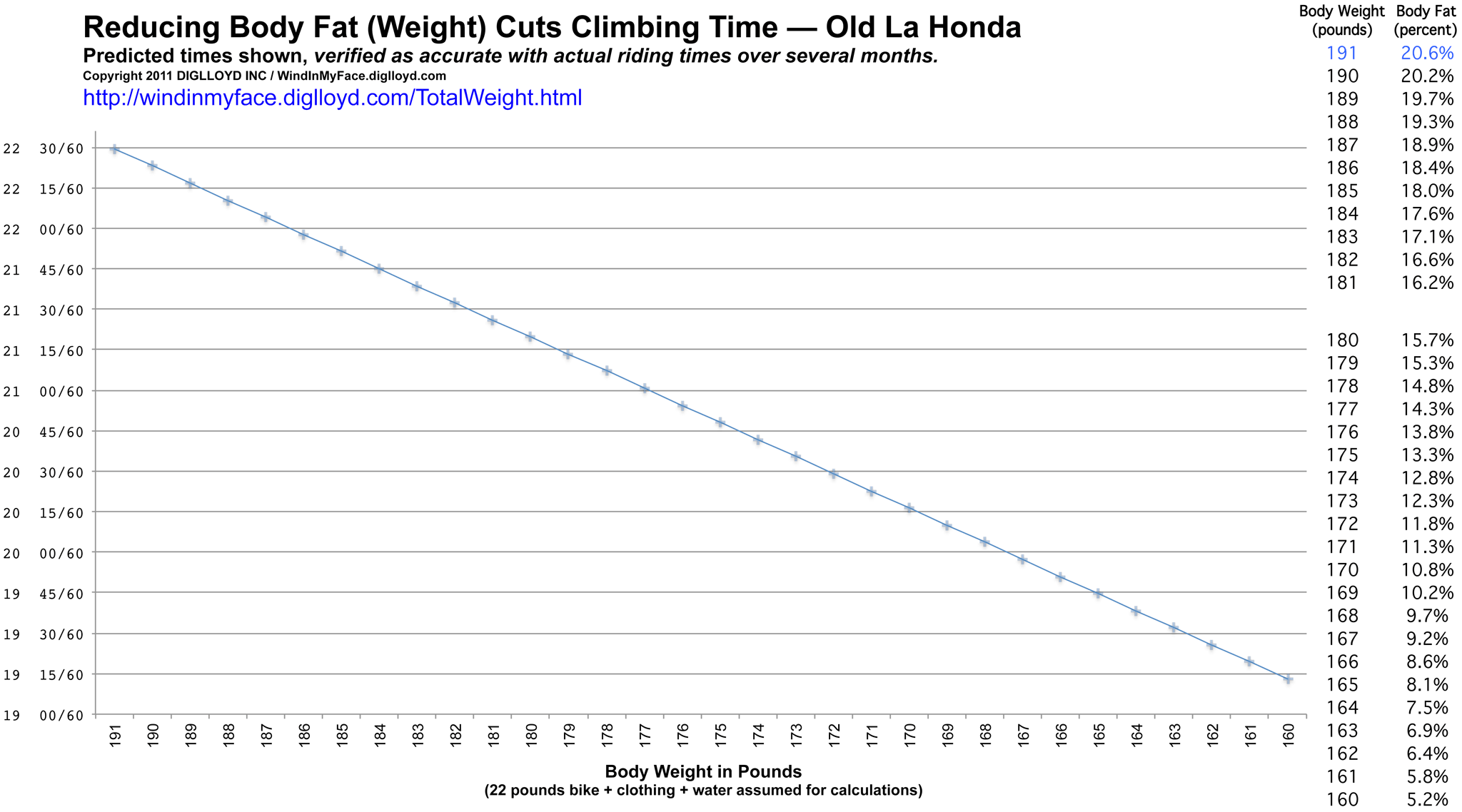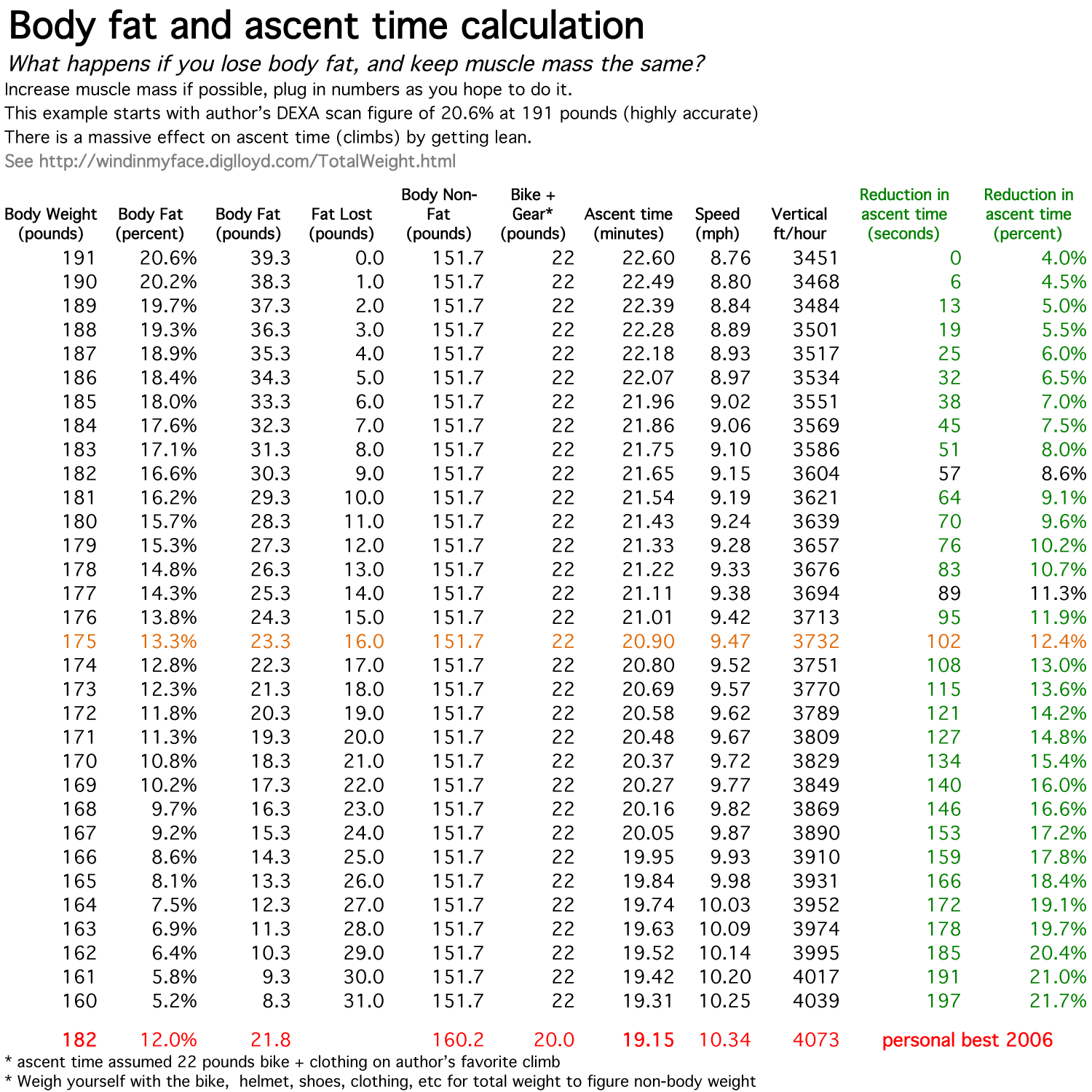
$220 SAVE $130 = 37.0% Western Digital 16.0TB Western Digital Ultrastar DC HC550 3.5-in… in Storage: Hard Drives
|

|

|

|

|
Predicting Ascent Times From Total Riding Weight (TRW)
See the discussion on the previous page.
As the speed increases, some gains will be lost to increased friction, but on 7% and steeper grades, this loss should be very modest, and the other factors discussed above might actually compensate, or more.
Certainly fitness will improve with continued riding, and proper weight loss should increase muscle mass, which will increase weight, but along with increased strength and speed, so the following table is simply a useful guide to what is roughly feasible.
The example climb here is the author’s standard training climb (repeats) and also time trial ride. It offers 1300 vertical feet of climbing in 3.3 miles at an average grade of 7.4%. Times are based on early-season efforts (2006 personal best of 19:09 at 182 pounds, 42 years old). Compare figures to the 2006 personal best, which shows that more muscle can overcome more weight. To have bettered that figure, body fat would have had to be reduced from 12%, which I found difficult to do at that time.
Testing the theory
Testing the theory in practice, an ascent at 180 pounds in early May predicted within 12 seconds the time 6 weeks later, as predicted from the 191 pounds weight (190 to 180 pounds during that time).
The peak effort level and strength on any particular day do vary; on that day I was not fully recovered and had already ridden for 90 minutes, and the time was 12 seconds slower than predicted. So I deem the chart below of highly reliable for predictive purposes.
Increased fitness will improve times further, but this chart gives the near-guarantee improvement to be had by shedding pounds.
Click for a larger view, and see data table further below.

power to weight; air friction plays a very small role at low speeds so the behavior is near linear

Seagate 22TB IronWolf Pro 7200 rpm SATA III 3.5" Internal NAS HDD (CMR)
SAVE $100



